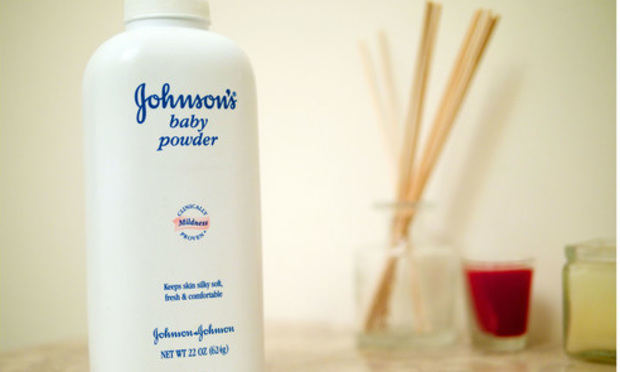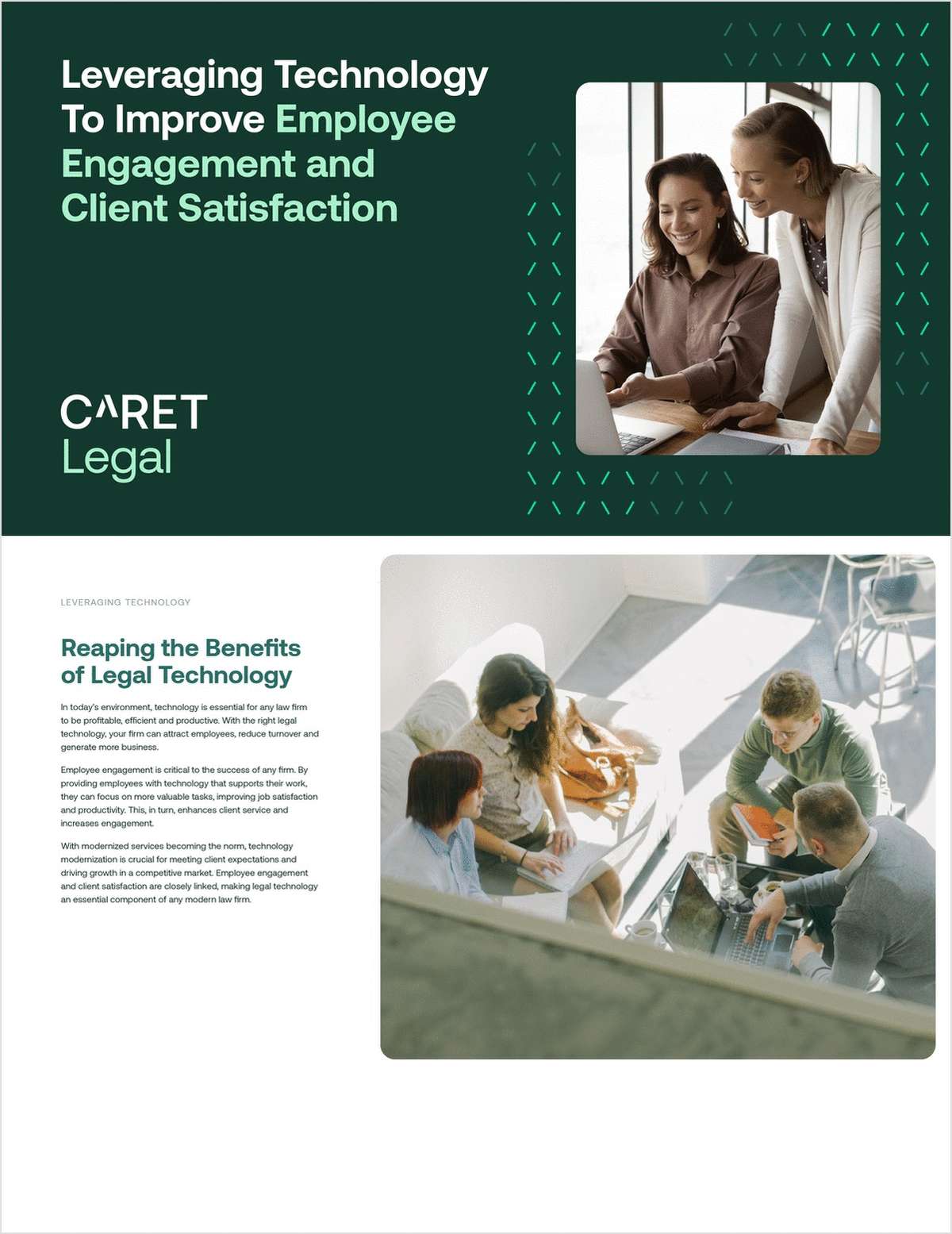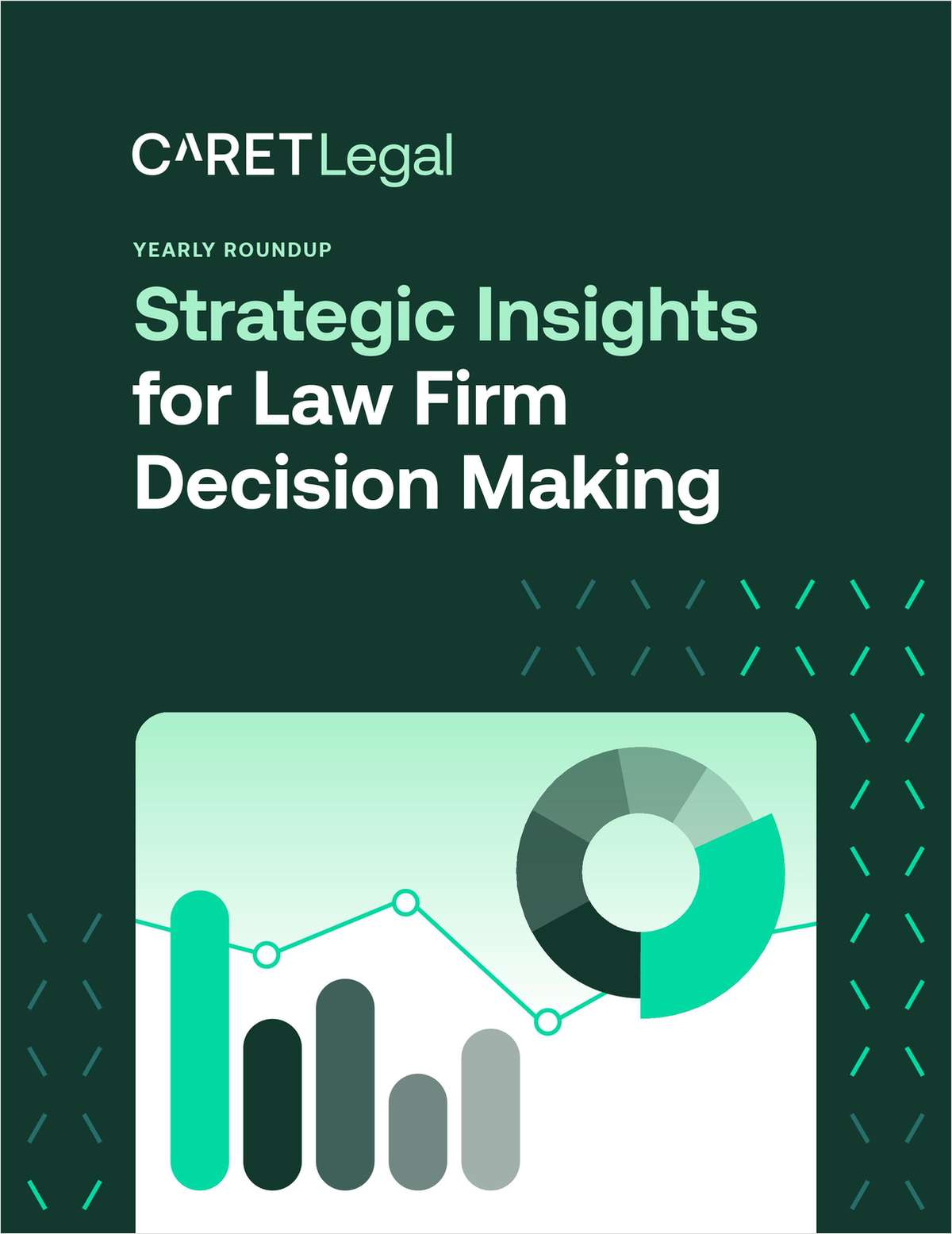Could Reversal of $417M Calif. Verdict Foreshadow Doom for Talc Cases?
A judge's ruling tossing a record $417 million verdict in California last week could spell trouble for attorneys handling cases for plaintiffs in talc products liability litigation—and not just because of the massive size of the rejected award.
October 24, 2017 at 03:50 PM
27 minute read

A judge's ruling tossing a record $417 million verdict in California last week could spell trouble for attorneys handling cases for plaintiffs in talc products liability litigation—and not just because of the massive size of the rejected award.
In her Oct. 20 decision, Los Angeles Superior Court Judge Maren Nelson outlined a host of problems with the jury's Aug. 21 verdict, the largest award in the talcum powder litigation. But her most pointed complaint struck at the heart of the cases: The plaintiff, she said, didn't provide enough scientific evidence that Johnson & Johnson's baby powder caused ovarian cancer.
In the end, Nelson wrote, “the best that can be said is that there was (and is) an ongoing debate in the scientific and medical community about whether talc more probably than not causes ovarian cancer and thus giving rise to a duty to warn.”
That conclusion is “going to be persuasive in other cases,” said George Talarico, managing partner of Locke Lord's Morristown, New Jersey, office, who is following the talcum powder litigation.
“Even if you put up different experts who espouse the same theories, the defendant will say, 'Your Honor, this whole theory was rejected—like in a big way.' This judge took this very seriously. She went through the effort of a trial and undid a trial. That's pretty damning.”
Plaintiffs' attorneys have said they are determined to appeal the ruling. Leigh O'Dell and Michelle Parfitt said the ruling would have no effect in New Jersey's federal court, where they are co-lead counsel for more than 2,600 women whose cases have been coordinated in multidistrict litigation. And the jury in California heard reams of scientific evidence before rendering its verdict.
“This scientific evidence known and available to the defendants demonstrated a consistent and statistically significant increase risk of ovarian cancer with genital talc use,” they wrote.
It was a tough week overall for plaintiffs in the talcum powder litigation, in which nearly 5,000 women have sued primarily in Missouri, California and New Jersey. Days before Nelson's ruling, a Missouri Court of Appeals panel reversed a $72 million talcum powder verdict—the first jury award to come out of the litigation.
The grounds for that reversal focused on jurisdictional matters in the wake of the U.S. Supreme Court's June 19 ruling in Bristol-Myers Squibb v. Superior Court.
But the science debate came to the forefront in California.
“Ovarian cancer is a devastating disease—but it is not caused by the cosmetic-grade talc we have used in Johnson's baby powder for decades,” spokeswoman Carol Goodrich wrote in a statement following Nelson's ruling. “The science is clear, and we will continue to defend the safety of Johnson's baby powder as we prepare for additional trials in the U.S.”
Nelson had several concerns about the case apart from the science. She found the compensatory damages award against Johnson & Johnson “grossly disproportionate to the verdicts in prior talc-cancer cases,” and that there was no evidence of malice to justify $347 million in punitive damages. She also found that jurors had engaged in “serious misconduct” by adding attorney fees and taxes into their calculation of compensatory damages.
But the lack of scientific evidence irked her. Why, for instance, did the jury award $408 million against Johnson & Johnson when its subsidiary, Johnson & Johnson Consumer Inc., which had been selling talcum powder products since 1967, was found liable for $9 million? The plaintiff, Eva Echeverria, began using talcum powder in 1965. “There was no showing that as of 1967 there was any suggestion by the scientific or medical community that talc was associated with ovarian cancer,” Nelson wrote. “And, no internal documents from the company prior to that date suggest that conclusion.”
Since the first verdict in early 2016, Johnson & Johnson's lawyers have attacked the science behind the plaintiffs' claims. In Missouri, tort reformers cited more than $300 million in talcum powder verdicts against Johnson & Johnson in pushing to change the state's rules on who and what kind of scientific evidence can be allowed at trials. Those changes went into effect in August.
Prior to those changes, a Missouri judge had allowed plaintiffs' evidence into trials, but others have not. A year ago, New Jersey Superior Court Judge Nelson Johnson tossed two plaintiffs' experts from two upcoming trials, criticizing their “made-for-litigation” methods. His subsequent summary judgment ruling is now on appeal.
The New Jersey ruling and the California decision have some key distinctions: Unlike in New Jersey, the California case went to trial, and the experts weren't the same in both cases. But both judges appeared concerned about the epidemiological studies on which the experts had relied.
“It's one of those areas that's as of yet going to be very difficult for plaintiffs to make in their cases, depending upon how strictly the court applies requirements for bringing in this kind of scientific evidence,” said Michael M. Martin, a professor at Fordham Law School. “These are tough cases for plaintiffs to make simply because we don't know enough about how these cancers occur, and if you can't do that it's hard to show what the defendants did was defective.”
Nelson spent much of her ruling focused on the plaintiff's expert who testified about Echeverria's diagnosis. In particular, Nelson found the expert had considered talcum powder a risk factor based on four studies whose “evidence was extremely limited” and that her decision to rule out other factors, such as age or obesity, “amounted to no more than speculation.”
But Nelson doubled down on the documents that plaintiffs attorneys had used to show there was a known ovarian cancer risk in talc prior to 2007, when Echeverria was diagnosed.
“This is a misreading of the evidence,” Nelson wrote. Plaintiffs attorneys had failed to prove such a link “given the lack of anything other than a hypothesis about causation and the nature of the epidemiological evidence presented.”
For plaintiffs attorneys, Nelson's ruling is particularly problematic given that she is overseeing all the talcum powder cases in California—a total of more than 700 women.
But the decision also is likely to be cited in cases in other states, as had the New Jersey ruling.
“Now you've got two lengthy, well-reasoned opinions that say there's not sufficient evidence on general causation or specific causation,” said Manuel Cachán, a partner at Proskauer Rose in Los Angeles who represented Johnson & Johnson in the California trial. “Judges are going to be looking at this issue very carefully because you have two courts now.”
“I don't see it that way,” said Allen Smith, of The Smith Law Firm in Ridgeland, Mississippi, one of the plaintiff's lawyers in the case. Smith noted that a federal judge allowed much of the same experts and scientific documents into the first talcum powder trial in 2013 in South Dakota—and that was under a much higher evidentiary standard.
And Nelson, in her order, had no issues with two other plaintiffs experts, he said.
Both the judges in California and New Jersey “are in error with regard to the state of evidence, which proves that genital talc use can cause ovarian cancer,” wrote Parfitt, of Ashcraft & Gerel in Washington, D.C., and O'Dell, a principal at Beasley, Allen, Crow, Methvin, Portis & Miles in Montgomery, Alabama. “We remain confident that both trial judges will be reversed once the Court of Appeals has an opportunity to review not only the liability evidence but to review the expert testimony and methodology employed by these world-renowned scientific and medical experts.”

A judge's ruling tossing a record $417 million verdict in California last week could spell trouble for attorneys handling cases for plaintiffs in talc products liability litigation—and not just because of the massive size of the rejected award.
In her Oct. 20 decision, Los Angeles Superior Court Judge Maren Nelson outlined a host of problems with the jury's Aug. 21 verdict, the largest award in the talcum powder litigation. But her most pointed complaint struck at the heart of the cases: The plaintiff, she said, didn't provide enough scientific evidence that
In the end, Nelson wrote, “the best that can be said is that there was (and is) an ongoing debate in the scientific and medical community about whether talc more probably than not causes ovarian cancer and thus giving rise to a duty to warn.”
That conclusion is “going to be persuasive in other cases,” said George Talarico, managing partner of
“Even if you put up different experts who espouse the same theories, the defendant will say, 'Your Honor, this whole theory was rejected—like in a big way.' This judge took this very seriously. She went through the effort of a trial and undid a trial. That's pretty damning.”
Plaintiffs' attorneys have said they are determined to appeal the ruling. Leigh O'Dell and Michelle Parfitt said the ruling would have no effect in New Jersey's federal court, where they are co-lead counsel for more than 2,600 women whose cases have been coordinated in multidistrict litigation. And the jury in California heard reams of scientific evidence before rendering its verdict.
“This scientific evidence known and available to the defendants demonstrated a consistent and statistically significant increase risk of ovarian cancer with genital talc use,” they wrote.
It was a tough week overall for plaintiffs in the talcum powder litigation, in which nearly 5,000 women have sued primarily in Missouri, California and New Jersey. Days before Nelson's ruling, a Missouri Court of Appeals panel reversed a $72 million talcum powder verdict—the first jury award to come out of the litigation.
The grounds for that reversal focused on jurisdictional matters in the wake of the U.S. Supreme Court's June 19 ruling in
But the science debate came to the forefront in California.
“Ovarian cancer is a devastating disease—but it is not caused by the cosmetic-grade talc we have used in Johnson's baby powder for decades,” spokeswoman Carol Goodrich wrote in a statement following Nelson's ruling. “The science is clear, and we will continue to defend the safety of Johnson's baby powder as we prepare for additional trials in the U.S.”
Nelson had several concerns about the case apart from the science. She found the compensatory damages award against
But the lack of scientific evidence irked her. Why, for instance, did the jury award $408 million against
Since the first verdict in early 2016,
Prior to those changes, a Missouri judge had allowed plaintiffs' evidence into trials, but others have not. A year ago, New Jersey Superior Court Judge Nelson Johnson tossed two plaintiffs' experts from two upcoming trials, criticizing their “made-for-litigation” methods. His subsequent summary judgment ruling is now on appeal.
The New Jersey ruling and the California decision have some key distinctions: Unlike in New Jersey, the California case went to trial, and the experts weren't the same in both cases. But both judges appeared concerned about the epidemiological studies on which the experts had relied.
“It's one of those areas that's as of yet going to be very difficult for plaintiffs to make in their cases, depending upon how strictly the court applies requirements for bringing in this kind of scientific evidence,” said Michael M. Martin, a professor at Fordham Law School. “These are tough cases for plaintiffs to make simply because we don't know enough about how these cancers occur, and if you can't do that it's hard to show what the defendants did was defective.”
Nelson spent much of her ruling focused on the plaintiff's expert who testified about Echeverria's diagnosis. In particular, Nelson found the expert had considered talcum powder a risk factor based on four studies whose “evidence was extremely limited” and that her decision to rule out other factors, such as age or obesity, “amounted to no more than speculation.”
But Nelson doubled down on the documents that plaintiffs attorneys had used to show there was a known ovarian cancer risk in talc prior to 2007, when Echeverria was diagnosed.
“This is a misreading of the evidence,” Nelson wrote. Plaintiffs attorneys had failed to prove such a link “given the lack of anything other than a hypothesis about causation and the nature of the epidemiological evidence presented.”
For plaintiffs attorneys, Nelson's ruling is particularly problematic given that she is overseeing all the talcum powder cases in California—a total of more than 700 women.
But the decision also is likely to be cited in cases in other states, as had the New Jersey ruling.
“Now you've got two lengthy, well-reasoned opinions that say there's not sufficient evidence on general causation or specific causation,” said Manuel Cachán, a partner at
“I don't see it that way,” said Allen Smith, of The Smith Law Firm in Ridgeland, Mississippi, one of the plaintiff's lawyers in the case. Smith noted that a federal judge allowed much of the same experts and scientific documents into the first talcum powder trial in 2013 in South Dakota—and that was under a much higher evidentiary standard.
And Nelson, in her order, had no issues with two other plaintiffs experts, he said.
Both the judges in California and New Jersey “are in error with regard to the state of evidence, which proves that genital talc use can cause ovarian cancer,” wrote Parfitt, of Ashcraft & Gerel in Washington, D.C., and O'Dell, a principal at
This content has been archived. It is available through our partners, LexisNexis® and Bloomberg Law.
To view this content, please continue to their sites.
Not a Lexis Subscriber?
Subscribe Now
Not a Bloomberg Law Subscriber?
Subscribe Now
NOT FOR REPRINT
© 2025 ALM Global, LLC, All Rights Reserved. Request academic re-use from www.copyright.com. All other uses, submit a request to [email protected]. For more information visit Asset & Logo Licensing.
You Might Like
View All

Law Firms Expand Scope of Immigration Expertise Amid Blitz of Trump Orders
6 minute read
Am Law 100 Lateral Partner Hiring Rose in 2024: Report
Trending Stories
- 1Uber Files RICO Suit Against Plaintiff-Side Firms Alleging Fraudulent Injury Claims
- 2The Law Firm Disrupted: Scrutinizing the Elephant More Than the Mouse
- 3Inherent Diminished Value Damages Unavailable to 3rd-Party Claimants, Court Says
- 4Pa. Defense Firm Sued by Client Over Ex-Eagles Player's $43.5M Med Mal Win
- 5Losses Mount at Morris Manning, but Departing Ex-Chair Stays Bullish About His Old Firm's Future
Who Got The Work
J. Brugh Lower of Gibbons has entered an appearance for industrial equipment supplier Devco Corporation in a pending trademark infringement lawsuit. The suit, accusing the defendant of selling knock-off Graco products, was filed Dec. 18 in New Jersey District Court by Rivkin Radler on behalf of Graco Inc. and Graco Minnesota. The case, assigned to U.S. District Judge Zahid N. Quraishi, is 3:24-cv-11294, Graco Inc. et al v. Devco Corporation.
Who Got The Work
Rebecca Maller-Stein and Kent A. Yalowitz of Arnold & Porter Kaye Scholer have entered their appearances for Hanaco Venture Capital and its executives, Lior Prosor and David Frankel, in a pending securities lawsuit. The action, filed on Dec. 24 in New York Southern District Court by Zell, Aron & Co. on behalf of Goldeneye Advisors, accuses the defendants of negligently and fraudulently managing the plaintiff's $1 million investment. The case, assigned to U.S. District Judge Vernon S. Broderick, is 1:24-cv-09918, Goldeneye Advisors, LLC v. Hanaco Venture Capital, Ltd. et al.
Who Got The Work
Attorneys from A&O Shearman has stepped in as defense counsel for Toronto-Dominion Bank and other defendants in a pending securities class action. The suit, filed Dec. 11 in New York Southern District Court by Bleichmar Fonti & Auld, accuses the defendants of concealing the bank's 'pervasive' deficiencies in regards to its compliance with the Bank Secrecy Act and the quality of its anti-money laundering controls. The case, assigned to U.S. District Judge Arun Subramanian, is 1:24-cv-09445, Gonzalez v. The Toronto-Dominion Bank et al.
Who Got The Work
Crown Castle International, a Pennsylvania company providing shared communications infrastructure, has turned to Luke D. Wolf of Gordon Rees Scully Mansukhani to fend off a pending breach-of-contract lawsuit. The court action, filed Nov. 25 in Michigan Eastern District Court by Hooper Hathaway PC on behalf of The Town Residences LLC, accuses Crown Castle of failing to transfer approximately $30,000 in utility payments from T-Mobile in breach of a roof-top lease and assignment agreement. The case, assigned to U.S. District Judge Susan K. Declercq, is 2:24-cv-13131, The Town Residences LLC v. T-Mobile US, Inc. et al.
Who Got The Work
Wilfred P. Coronato and Daniel M. Schwartz of McCarter & English have stepped in as defense counsel to Electrolux Home Products Inc. in a pending product liability lawsuit. The court action, filed Nov. 26 in New York Eastern District Court by Poulos Lopiccolo PC and Nagel Rice LLP on behalf of David Stern, alleges that the defendant's refrigerators’ drawers and shelving repeatedly break and fall apart within months after purchase. The case, assigned to U.S. District Judge Joan M. Azrack, is 2:24-cv-08204, Stern v. Electrolux Home Products, Inc.
Featured Firms
Law Offices of Gary Martin Hays & Associates, P.C.
(470) 294-1674
Law Offices of Mark E. Salomone
(857) 444-6468
Smith & Hassler
(713) 739-1250









